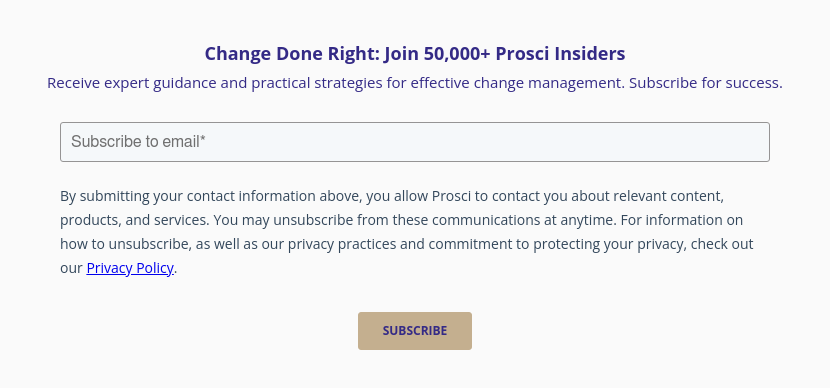Organisational Fitness: How to Grow Change Management Maturity

6 Mins
Updated: April 3, 2025
Published: November 1, 2024

The prominent trend in organisational development and design is developing frameworks for adaptive organisations. I have the opportunity to look into many of the popular approaches, and whether you call them Teal Organisations, Agile Organisations, Holacracy, Teams of Teams, Responsive Organisations or some other catchy name, they tend to have similar principles at their core. They are all geared toward helping organisation change faster and better than their competitors.
Thriving Through Uncertainty
One of these concepts I have spent some time with lately is Antifragile, a concept developed by mathemetician and author, Nassim Nicholas Taleeb. Being "antifragile" is about being able to capitalize on disorder. It's about thriving during uncertainty or high-risk times. It's about creating opportunity from challenges.
While not exactly an organizational framework for change, I have found this concept particularly useful because it clearly outlines the end goal: benefiting from change and disorder.
Many organisations set goals around being more robust or resilient. However, if we take a closer look, being robust means being able to withstand change. Resilience means being able to absorb change. Both terms describe ways to withstand change rather than benefit from it. A dam can be robust, but when it breaks, it floods the towns it protects. A beach can be resilient, absorbing the waves, but when the tsunami hits, the beach is overwhelmed.
A better approach is to define our goal as benefiting from change. Doing so enables you to develop a strategy that creates an advantage and puts you ahead of the pack. While this sounds like semantics, it is not. It is about a mindset of performance versus survival.

Change That Makes You Stronger
In this sense, building change capability is a bit like getting physically fit. At first, it is difficult and maybe even painful. When exercising, you are actually tearing down the muscles (microtears) and putting stress on your body to become stronger through the repair process. Each session increases your tolerance, requires less energy, and regenerates with less pain as you do more.
At the same time, if you don’t continuously challenge your body, muscles become complacent or even begin to atrophy. Thus, it is in your interest to continuously disrupt yourself in with bigger and new forms of exercise.
Similarly, organisations that build their change capability will become more capable of managing regular change. And, by continuously challenging themselves, they will be in a stronger position when unforeseen changes occur. They will respond with more dexterity, quickness and agility, and perform like super-athletes.
This analogy works because it considers organisations as complex, organic structures. Unfortunately, many leaders today still think of organisations as machines. The perspective stems from centry-old principles of scientific management that rely on hierarchies, separating thinkers from doers, and a strong focus on specialisation of roles.
This can create stability and the perception of predictability in general operations, but the system breaks down when it comes to rapid and increasing change.
However, the popular frameworks I mentioned above eschew the machine mentality. Instead, they advocate for the organic approach of thinking holistically about how the modern organisation needs to operate to benefit from disorder and change.
“Complex systems are weakened, even killed, when deprived of stressors.”
— Nassim Nicholas Taleb
The first step in this journey is to understand if our organisation is fit or unfit. Of course, consultants will say that analysis needs to be done (hopefully for a good fee), but there are some immediate and clear indications, based on the organisational narrative.
To understand fitness, we listen for phrases like:
- “We have no time to develop our strategy because we are always fighting fires.”
- “How can the boss(es) lead change when they have so much work to do?”
- “Decisions take a long time to make, if they are made at all.”
- “Managers do not execute change rapidly or well once decisions are made.”
- “By the time we implement a change, it is obsolete.”
- “We seem to be working harder and harder but are having less impact.”
- “We are experiencing too much change, and it is exhausting.”
- “We have so many changes to make, it is hard to prioritise what to do first.”
- “We are not able to keep up with the speed of technology or the amount of information we have to deal with now.”
If one, several, or all of these story lines are familiar, it is safe to say that an organisation’s fitness can improve.
The next step is to look at the organisational environment. The Cynefin framework put forward by David Snowden and Mary Boone is a particularly insightful tool that has become a standard.
This framework presents the potential environment in four possible domains: Simple, Complicated, Complex and Chaotic. While I am sure I’m not doing the framework justice, it essentially distinguishes the relationship between cause and effect in each domain. As one moves from complicated (machine-like) to complex (organic) the cause and effect of a change moves from relatively predictable to relatively uncertain in the near term. Moving from complex to chaotic, we lose all ability to predict the future in the near or long term.
The difference is in how we deal with change. In a complicated environment, we can plan our interventions assuming the outcome is clear. In the complex or chaotic environments, we must prepare for changes that are increasingly unforeseeable with unpredictable outcomes.

Once we know the environment, we can begin to assess the appropriate goals. What are you trying to achieve by building your change capability? How fit do you want to be and by when? Are you striving for health or are you looking for performance?
From an "organisation as a machine" mindset, you set goals like:
- Improving the utilisation of people in our change
- Scaling our change across multiple projects
- Analysing our change capabilities and making improvements
- Connecting our change capabilities with project management and Agile (Scrum/Kanban) methods
- Mitigating the risks of change saturation
Here, you are looking at incremental approaches with relatively clear and predictable outcomes. If successful, you will be more fit as an organisation. However, you are still likely to struggle to perform in complex or chaotic environments.
To be successful with change in such circumstances, you need to use an organic approach. Unfortunately, this path becomes less clear. It is often characterised using ambiguous phrases like “instilling agility” or “making change part of our DNA,” a statement that can be seen as too theoretical.
But if we unpack it a bit, we can find supporting goals to work on practically. Drawing on best practices of many of the popular approaches, here are 10 initiatives an organisation can take to build their muscles for performance:
- Recognise change as the end goal – Many organisations see change as exceptional, a burden to overcome, after which, the organisation will return to normal operations. Instead, we want to think of continuous change as our goal, something to achieve and measure.
- Make change THE leadership competency – Hire and develop your leaders with change as their focus. In other words, define leadership in your organisation as leading change. If you are not leading change, they are not leading, they are managing.
- Treat information as an asset – Information is antifragile because people want it, and if they can’t get it, they want it more. Treat is as an asset to be distributed and managed liberally. Open the lines that allow information flow.
- Value and build networked relationships – This goes into a lot of theory, but the crux is that information flows through networks. By recognising and enabling networks both formal an informal, the organisation becomes more capable of distributing its greatest asset. By denying networks and sticking to lines of control, you are squandering it.
- Reward “observe and adapt” behaviour – Most organisations reward their people for meeting their forecast or achieving plans. By also recognising those who are able to adapt to the situation and still achieve, perhaps more than was expected, we enable the right behaviours for adaptive organisations.
- Create change ecosystems, not functions – Many organisations lay the responsibility of change on a person or small group. In fact, it is everyone’s role to lead and enable change. Coaching people though this process and on their role as change leaders, you can begin to build an ecosystem.
- Build frameworks for change and allow adaptation – Creating a common approach and establishing a language for change, you continue to build the ecosystem. Be careful not to make it so rigid that people reject it for their own approach. Being adaptive means allowing people to adapt the framework and to learn from it.
- Focus on small interventions, prepare for big ones – Small interventions keep our change muscles in shape and will eventually lead to a tipping point resulting in evolutionary change. By building a regiment, we prepare for the day when a big intervention may be necessary.
- Disrupt your routine – Similarly, by disrupting ourselves, we make our organisations antifragile. Doing the same routine over and over, even when it comes to change, can make us complacent. By adding in a different routine or changing up the routine, we build new and different muscles.
- Treat resistance as opportunity – In this world, resistance really is not a thing. Rather, a high-performance organisation will seek out and amplify differences.
There are many ways to reach a level of organisational fitness when it comes to change. No one approach is perfect but they all have similar core principles that can help you find your way. Just like personal fitness, the real test is to understand where you are today and what you want to achieve then get off the sofa and start the process.
Create Opportunity From Change Challenges
If you're interested in learning more about the theme of enterprise change management, we work with both individuals and organisations to help them build their change management muscles.
Achieving organisational change competency, can often start with just one change management practitioner. For details on our Prosci Change Management Certification
If you’re specifically interested in learning how to increase your organisations change management maturity, you may want to consider attending our Enterprise Change Management Boot Camp.



